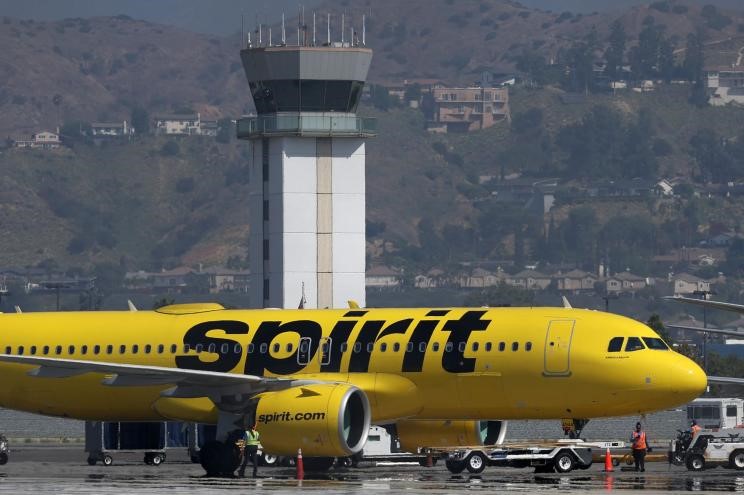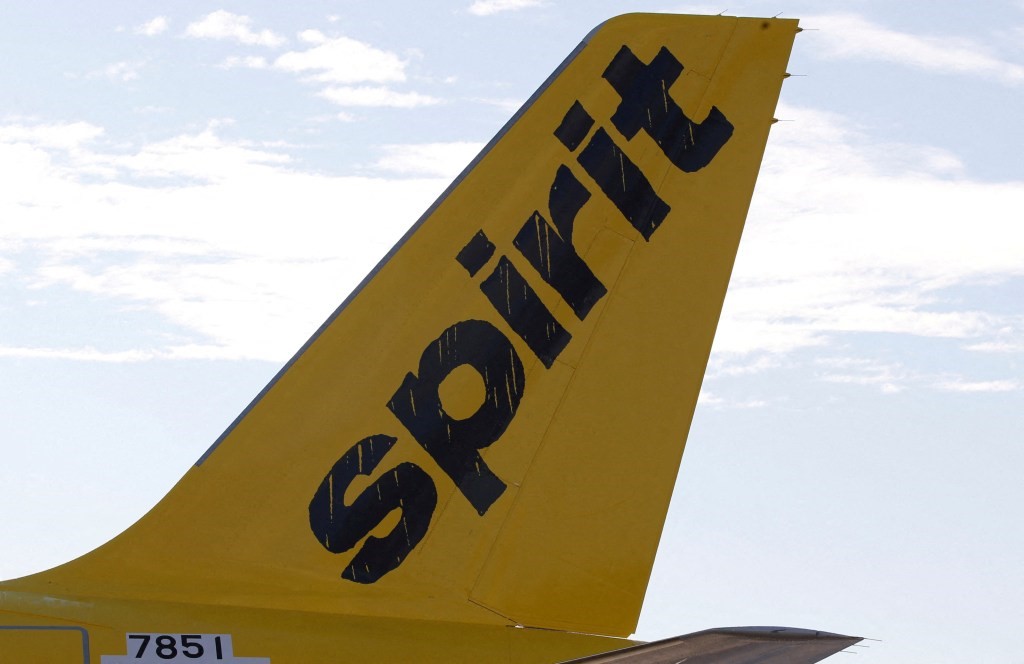There’s something at Spirit requiring HELP!!!

Below is a very confusing article about Spirit Airlines grounding of an unspecified number of its a320 aircraft for required maintenance. The specific model type (ceo or neo) and engines on these aircraft are also not mentioned. The report indicates that their grounding is to inspect “cracking around fasteners that attach pressure panels to beams on the planes’ airframes. Additional research points to the origin of this interruption is a 2018 FAA Airworthiness Directive, AD 2028-12-02, which warned “If undetected, the cracks could lead to reduced structural integrity and possible rapid decompression of the airplane.”

This AD was prompted by a review of maintenance instructions for a blend repair of the snout diameter of the main beam assembly of the forward engine mount that would create an excessive gap between the bearing mono-ball and the snout. This AD requires modifying the main beam assembly of the forward engine mount. The Federal Register page includes the following pertinent comments:
This condition, if not detected and corrected, could lead to in-flight failure of a forward engine mount and consequent detachment of an engine, possibly resulting in reduced control of the aeroplane and injury to persons on the ground.
To address this potential unsafe condition, Airbus issued Service Bulletin (SB) A320– 71–1065 and SB A320–71–1066, and Goodrich Aerospace issued SB RA32071– 159, providing instructions FOR AN IN-SHOP INSPECTION(S) FOR THE MAIN BEAM SNOUT and, depending on findings, applicable corrective action(s) and re-identification. Consequently, EASA issued AD 2017– 0132, requiring REPLACEMENT OF THE AFFECTED FORWARD ENGINE MOUNT MAIN BEAM ASSEMBLIES…. it was determined that, for aeroplanes equipped with an affected forward engine mount main beam assembly, installation of an affected assembly can still be allowed until replacement, as required by this [EASA] AD. …The modification includes REPAIRING, REPLACING, OR REWORKING THE MAIN BEAM ASSEMBLY.”
These directions seem to say that some/all of these parts, shown as possible examples in this graphic, need to be removed and replaced.

Spirit has a fleet of 144 a320s with an average age of 5.4 years. The company’s maintenance, engineering, and repair organization should have known about AD 2018-12-02. They must have been aware of the serious airworthiness concerns raised by EASA and the FAA. Obviously, they did not, or a generous interpretation might say that the internal staff did not fully comprehend the poly sentences with dependent clauses and an occasional ambiguity. Not entirely comfortable with the notion that Spirit’s PMI would allow the certificate holder to be in a situation so desperate that so many planes must have been grounded.
Enforcement is not the favored FAA response to human error, if it is inadvertent. The failure to identify this maintenance failure could be considered as significant enough to merit some FAA sanction. The airline has had a bad history on similar issues:
“The Federal Aviation Administration (FAA) has fined Spirit Airlines multiple times for various safety violations. These fines are issued for a variety of reasons, such as maintenance issues and improperly bumped passengers {NOTE: this report incorrectly identified this as an FAA Safety issue; it’s a DOT Consumer Problem.}.
Maintenance issues are a significant concern for the FAA, as they can have a direct impact on the safety of an aircraft and its passengers. The FAA has fined Spirit Airlines for maintenance issues such as inadequate inspection and repair procedures, and for failing to properly maintain aircraft equipment. These fines are meant to serve as a deterrent and to encourage the airline to take the necessary steps to address the maintenance issues and ensure the safety of its aircraft and operations.
…
The fines imposed by the FAA serve as a reminder of the importance of maintaining high standards for safety in the aviation industry. By imposing fines for safety violations, the FAA holds airlines accountable for their actions and helps to ensure that they are operating with the highest level of safety for their passengers and operations.”
This may not be the end of this story; the Certificate Holding District Office may yet take action. In anticipation of a possible adverse action, Ted Christie, President and Chief Executive Officer of Spirit Airlines, would be well-advised to initiate an external audit of the relevant staff, policies, procedures and documentation. Acting before the FAA takes action by hiring a Subject Matter Expert team to ensure that Safety Management System and a vibrant Safety Culture are in place could serve to mitigate any FAA sanction.

Spirit Airlines cancels dozens of flights to inspect some of its planes, disruptions will last days
By
Associated Press

Spirit Airlines canceled dozens of its flights on Friday so some of the aircrafts could be inspected causing disruptions that may last several days. Getty Images
Spirit Airlines canceled about 100 flights on Friday after pulling some planes out of service for inspections, and the airline expects the disruptions to last several days. Spirit did not describe the nature of the inspections and did not respond when asked for further information, but the Federal Aviation Administration said it involved INSPECTION OF BRACKETS ON THE PLANES’ AIRFRAMES. By late Friday afternoon, Spirit had canceled 11% of its schedule for the day, easily the highest percentage of scrubbed flights among leading US carriers, according to tracking service FlightAware.
“We’ve cancelled a portion of our scheduled flights to perform a necessary inspection of a small section of 25 of our aircraft,” Spirit said in a statement. “The impact to our network is expected to last several days as we complete the inspections and work to return to normal operations. ”The FAA said it was aware of Spirit’s decision to pull the planes from service for a “mandatory maintenance inspection.”
The inspections are required to look for signs of cracking around fasteners that attach pressure panels to beams on the planes’ airframes, according to an FAA document.
The FAA said it was aware of Spirit’s decision to pull the planes from service for a “mandatory maintenance inspection.” AP
If undetected, the cracks could lead to reduced structural integrity “and possible rapid decompression of the airplane,” according to the document. Fatigue cracks in the frames of planes are a long-known risk. The inspections that Spirit is conducting have been required by European and US regulators for many years and were last updated by the FAA in 2018. The FAA said that for the Spirit planes, it “will ensure that the matter is addressed before the airplanes are returned to service.”
The inspections are required to look for signs of cracking around fasteners that attach pressure panels to beams on the planes’ airframes, according to an FAA document. REUTERS
Spirit had 198 planes as of June 30, all of them variants of the Airbus A320 family, according to a company regulatory filing. The airline told customers to check the status of their flight before going to the airport. About half of the Spirit cancellations were at Florida’s Orlando International Airport, where Spirit is the second-largest carrier.

The inspections that Spirit is conducting have been required by European and US regulators for many years and were last updated by the FAA in 2018.REUTERS